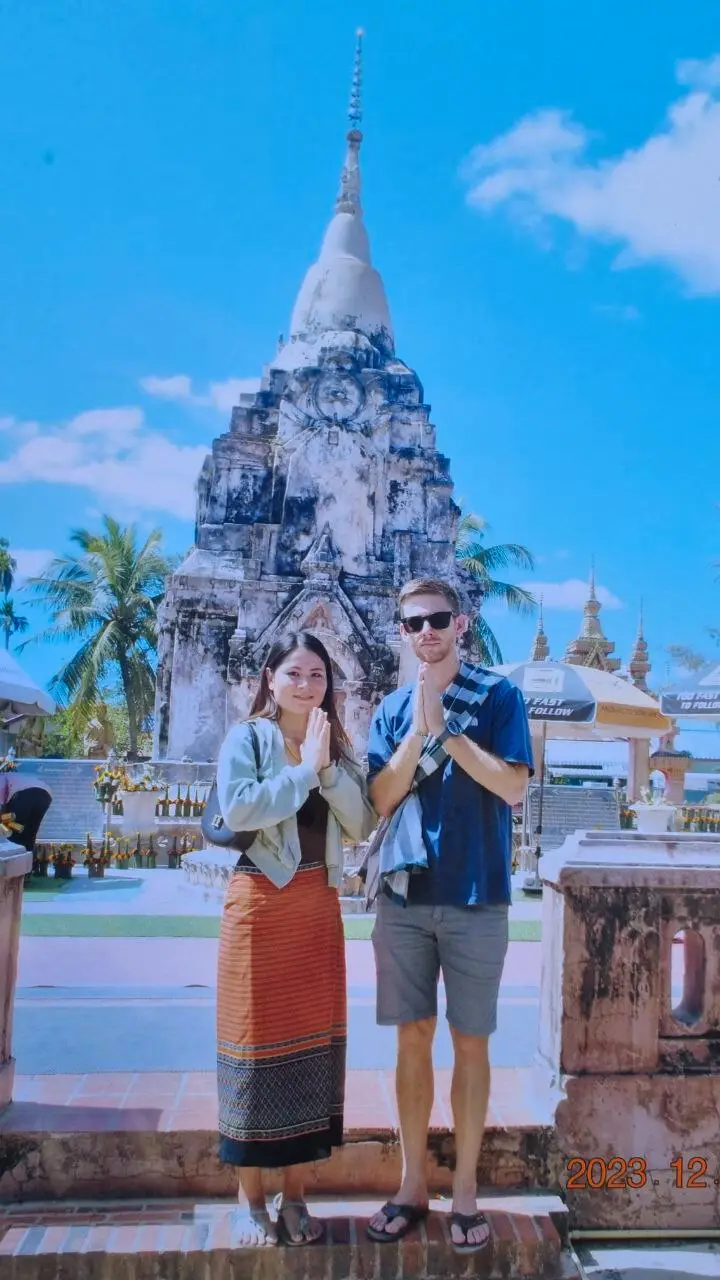
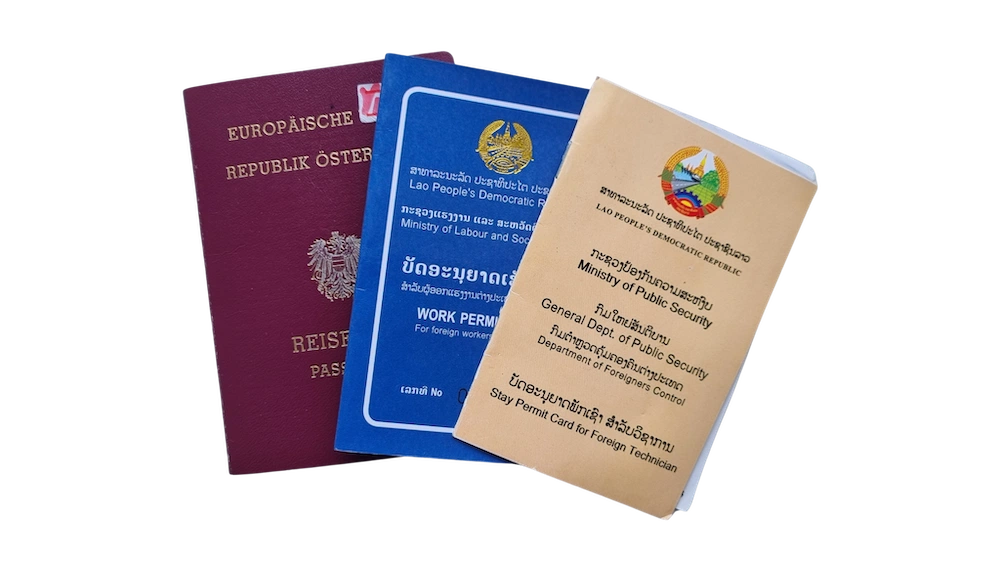
If you are planning to stay in Laos for a longer period of time, it makes sense to get yourself a long-term visa. Or even if you are thinking of retiring in Laos or working remotely as as a digital nomad, the visa options are quite good and simple to get in Laos. Laos has no visas called “Retirement Visa Laos” or “Digital Nomad Visa Laos“, but there are easy ways to obtain a long-stay visa. Options for retirees and digital nomads are available, just under a different name. In case of employment in Laos, your employing company will usually sort out all visa matters.
Compared to to other countries in Southeast Asia, it is easy and straight forward to stay in Laos for a longer time. Long-term visa option in Laos ranging from 3-months, 6-months, 9-months and 12-months – renewable indefinitely. Let me explain all the option people have, who want to live in Laos permanently or temporarily. This guide only covers long-term visas in Laos. Everything regarding Laos Tourist Visa is covered in another article.
The Lao PDR has plenty of visa options, depending on the reasons of staying in the country. Spouse visa if married to a lao citizen, tourist visa, investor visa and many more. Here is a complete list of all types of visas available in Laos.
A Lao Tourist Visa is issued to foreigners who intend to enter the Lao PDR for tourism purposes.
Foreigners who are employed in Laos can apply for a Labor Visa. Usually the sponsoring company handles all the paperwork. It also covers their accompanying family members. This type of Visa is also used for retirees or digital nomads, who want to stay in Laos long-term and will be covered mostly in this article.
Foreigners legally married to a Lao citizen with official marriage registration.
Foreign investors and their families can apply for a Business Visa if they plan to invest or conduct business research in Laos. Once approved (with licenses and registration), they can apply via the One-Stop Service (OSS), which checks entry eligibility with immigration. For an NI-B2 Visa it is necessary to have a local lao company with your name on the business license.
Diplomatic visas are for accredited diplomats, consular staff and UN or international organization representatives — plus their families — based on an official request letter.
This kind of visa is for administrative or technical staff at embassies or consulates, plus their accompanying family members.
Permanent Visa is issued to foreigners and stateless persons who have been granted permission to reside permanently in the Lao PDR. Also known as Permanent Residency.
This visa is for foreign professionals working in Laos with NGOs, government agencies, private companies, or international organizations — typically under formal contracts. Family members may also be included.
Foreigners coming to Laos for studies, research, internships, or academic training in any field are eligible for a Student Visa.
Travelers passing through Laos en route to another country can apply for a Transit Visa.
Foreign journalists entering Laos to report or gather news content can apply for a Journalist Visa.
Laos does not have an official visa called “Retirement Visa.” But that doesn’t mean you can’t retire in the country — it’s simply handled differently in the Lao PDR and retirees are very welcome to settle down in Laos.
In practice, retirees live in Laos long-term typically using a Work Visa (LA-B2) or other long-stay visa types, often arranged through a visa agency or sponsor. These agencies act as your “employer” or local sponsoring company, even if you’re not actively working, and do all the paperwork. For retirees over 50 it is not necessary to also process a separate work permit as they planning to retire. So for retirees simply an LA-B2 visa without a work permit (additional document) needs to be processed to be able to stay in the country. An LA-B2 visa can be done for 3, 6, 9 or 12 months and is renewable/extendable. The sponsoring company takes care of everything.
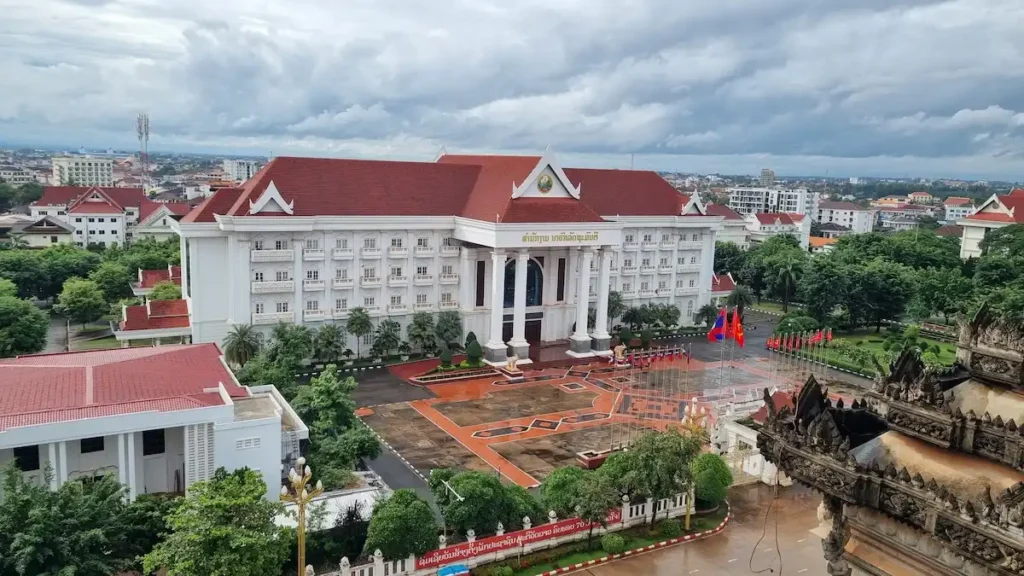
Just like with retirement, Laos does not officially offer a Digital Nomad Visa. However, that doesn’t mean remote workers can’t live and work online from Laos. In practice, many Digital Nomads in Laos are individuals who work remotely for companies based abroad or run their own businesses registered in other countries.
If you’re a digital nomad or remote worker and want to stay longer in Laos, there are currently two main visa options available: Tourist visa + extensions or work visa (LA-B2).
A Lao tourist visa, whether obtained via eVisa or Visa on Arrival (VoA), is valid for 30 days and can be extended up to a total of 90 days. After that, you’ll need to leave the country and re-enter to start the process again. Unlike neighboring countries such as Thailand, Laos is relatively relaxed when it comes to repeated tourist visa renewals. However, this still involves travel costs, visa fees, and border runs, which can add up over time – just keep that in mind.
This option is ideal for short- to medium-term stays but may not be optimal for long-term digital nomads due to its limited duration. I know people who are staying long-term in Laos on a tourist visa and it is absolutely no problem. So for those, frequently traveling outside of Laos, this might be an option.
The Work Visa (LA-B2) is a multiple-entry visa and the most common long-term visa solution for digital nomads in Laos. Although officially intended for people working with local companies, many remote workers use the LA-B2 visa through the support of a sponsoring local company or visa agency. Even if you’re not employed in Laos, the local sponsor acts as your host for visa purposes.
Since most digital nomads are of working age, it’s recommended to also obtain a work permit alongside the visa — even if you’re only working online for foreign clients. This helps avoid potential legal grey areas. The annual costs for a work permit are around 100 – 150 USD. The official employer takes care about all the paperwork and also pays a small amount of taxes for the employee, which is all included in the package price most sponsors or visa agents offer.
While the LA-B2 visa isn’t designed specifically for remote workers, it’s currently the most realistic and stable option for staying in Laos long-term as a digital nomad.
At the moment, there is no official digital nomad visa in Laos. But with the right setup, digital nomads can still enjoy life in Laos through a business or tourist visa arrangement. Always work with a reliable local visa agency to ensure compliance with Lao immigration laws.
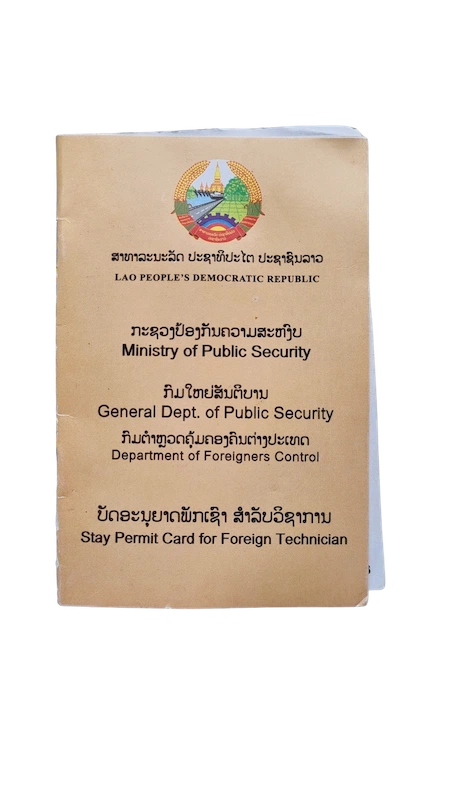
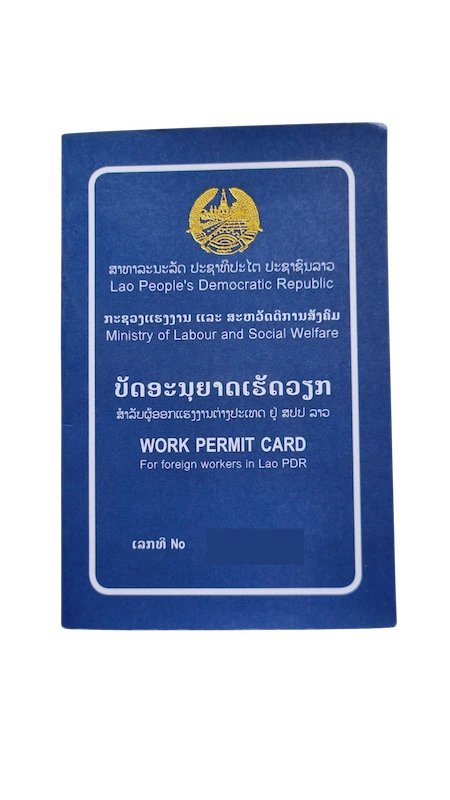
As mentioned above, the LA-B2 is the most common option for foreigners wanting to stay long-term in Laos, but who are not married to a lao citizen or investors or have their own business, etc. The process itself is straight forward. Most important step is, to find a reliable visa agent or sponsoring company. There are many of them in Laos, but some of them do not have a good reputation. So safe yourself some headache and choose wisely. Laos Insider has reliable partners across Laos – feel free to contact us if you want to set up a long-term visa in Laos.
Once you have a sponsoring company, the process itself is quite easy to obtain a 12-months LA-B2 visa, either with or without work permit. The visa also comes with a stay permit, which is kind of a temporary residency in Laos.
Once you have a 12-months (or 3, 6, 9 months) long-term visa, such as an LA-B2, the extension process is even easier than the actual process of initially getting it (well both are easy). At least two weeks before the expiry date of the current visa, get in touch with your sponsoring company and tell them if you want to renew the visa, work permit and stay permit.
For the extension process it is not necessary to leave the country. Hand over or send the original papers to the sponsor or visa agent, pay the visa + processing fees and wait. The sponsoring company again handles everything for you and no physical presence at an immigration office is needed. Expect to wait again between 7-14 days, before everything is done. Renewing the visa is cheaper because there is no necessity to get another confirmation letter, which saves you 100 USD. Reliable sponsors & visa agents charge around 450 – 550 USD for another 12-months LA-B2 visa + work and stay permit. Extensions can be done indefinitely. Immigration will usually not ask you any questions because officially you are an employed foreign expert (also they do not care at all ;).
The Spouse Visa (SP-B3) is another option for long-term residence in Laos, but it comes with more complexity than most people expect. To qualify, you must be legally married to a Lao citizen, and that means going through a lengthy and often expensive marriage registration process in Laos. The legal framework requires multiple steps: obtaining local approval, providing extensive documentation such as police clearances, medical certificates, financial statements, and translating everything into Lao, before the marriage can be officially recognized.
Many expats report the process taking months or even years, with unofficial fees sometimes requested to speed things up. Once the marriage is formally registered, you can apply for the SP-B3 visa at the Ministry of Foreign Affairs, followed by a stay permit at the Office of Foreigner Administration, and finally convert it into a one-year renewable visa. The official fees themselves are modest, but the bureaucratic hurdles make the entire process time and money consuming. The benefit, however, is that the SP-B3 visa allows foreign spouses not only to live in Laos but also to work legally, provided a local company sponsors the necessary work permit. In short, marrying a Lao citizen and securing a spouse visa is possible and does grant long-term stability, but it requires patience, persistence, and often significant costs to navigate the system successfully.
Laos does not officially offer a “Retirement Visa” or “Digital Nomad Visa,” but there are straightforward alternatives for foreigners who want to live in the country long-term. The most common solution is the LA-B2 Business Visa, arranged through a sponsoring company or visa agency, which can be issued for 3, 6, 9, or 12 months and renewed indefinitely. Retirees can use this visa without needing a work permit, while digital nomads often obtain both the visa and a work permit to avoid legal gray areas. Another option is the Spouse Visa (SP-B3) for foreigners married to Lao citizens, though the marriage registration process is long, costly, and bureaucratic. Tourist visas can also be extended up to 90 days, making them useful for shorter stays or frequent travelers. With the right visa agent, staying in Laos long-term is easier than in most neighboring countries, but choosing a trustworthy sponsor is crucial.
No, Laos does not issue visas under those names. But Retirees and digital nomads typically use the LA-B2 Business Visa, arranged through a sponsor or visa agent. So inofficially the LA-B2 Visa can be called “Retirement Visa” or “Digital Nomad Visa” in Laos.
The LA-B2 visa can be issued for 3, 6, 9, or 12 months, and it is renewable indefinitely. Extensions are straightforward and don’t require leaving the country.
No, not if you are working for clients outside the country (foreign sourced income, territorial taxation in Laos), but it’s recommended if you are younger. Having an LA-B2 visa + work permit avoids legal uncertainties and ensures your residency status is fully compliant. So working online is totally fine and will not require filing a tax declaration.
You must first register your marriage in Laos, which involves extensive paperwork, translations, police clearances, and approvals from every level (village, district, province & MOFA). Once recognized, you can apply for the SP-B3 visa, stay permit, and annual renewal.
Costs vary, but reliable sponsors and agents typically charge $450–550 USD per year for an LA-B2 visa including the stay permit and work permit.
No, it is not Thailand where things are complicated. For long-term visa holders in Laos, there are no address reports or even visits at immigration offices. The sponsoring company or visa agency handles all the paperwork.